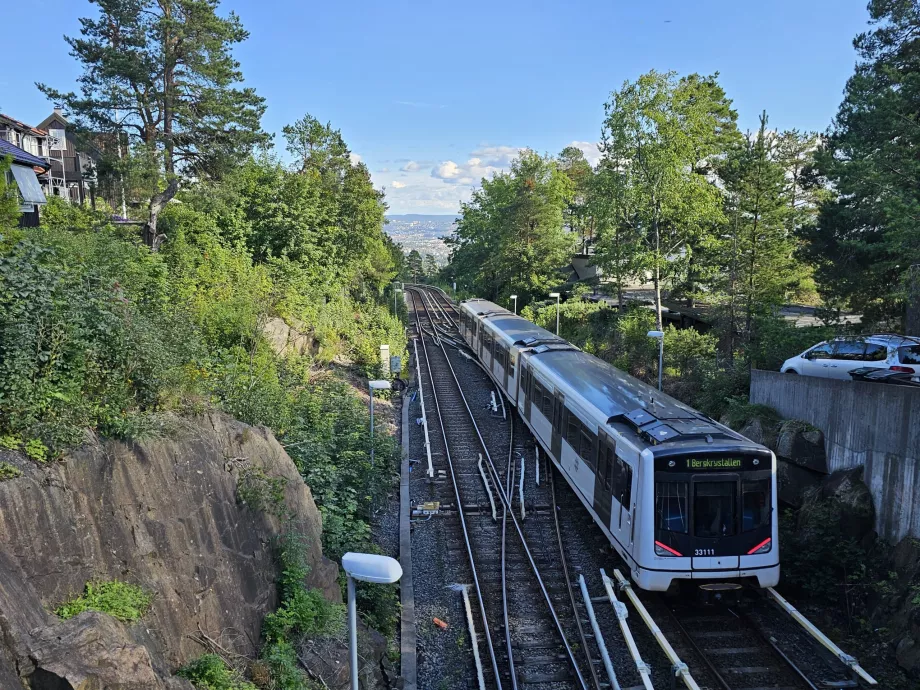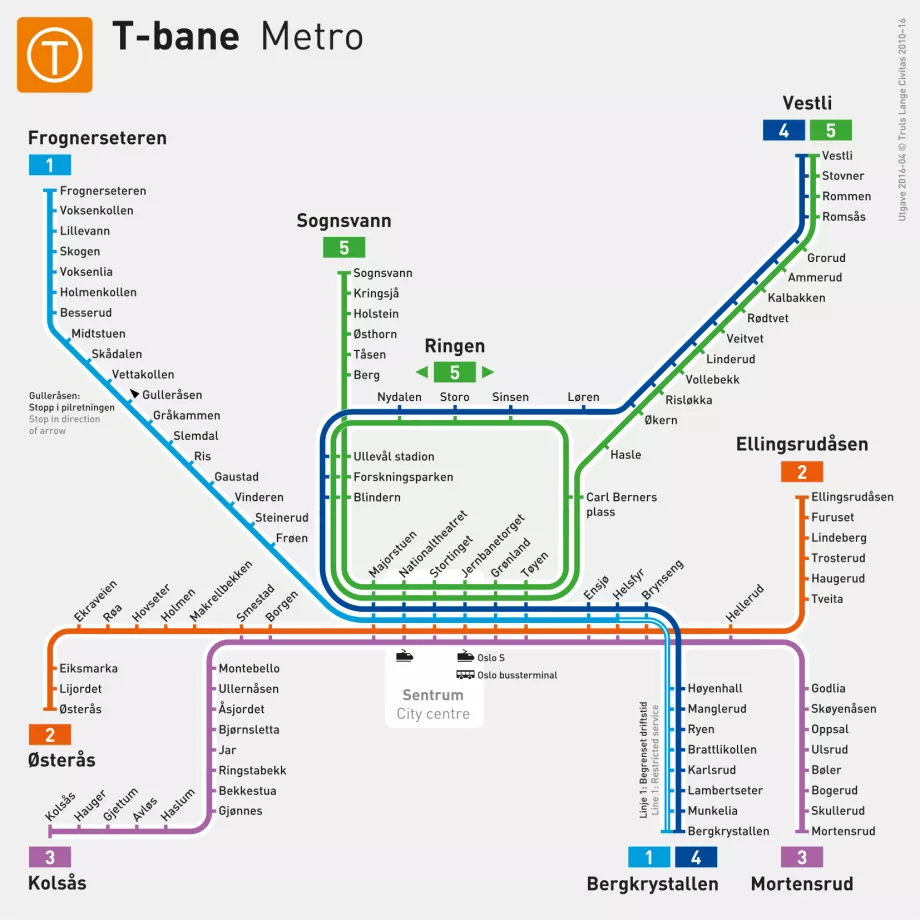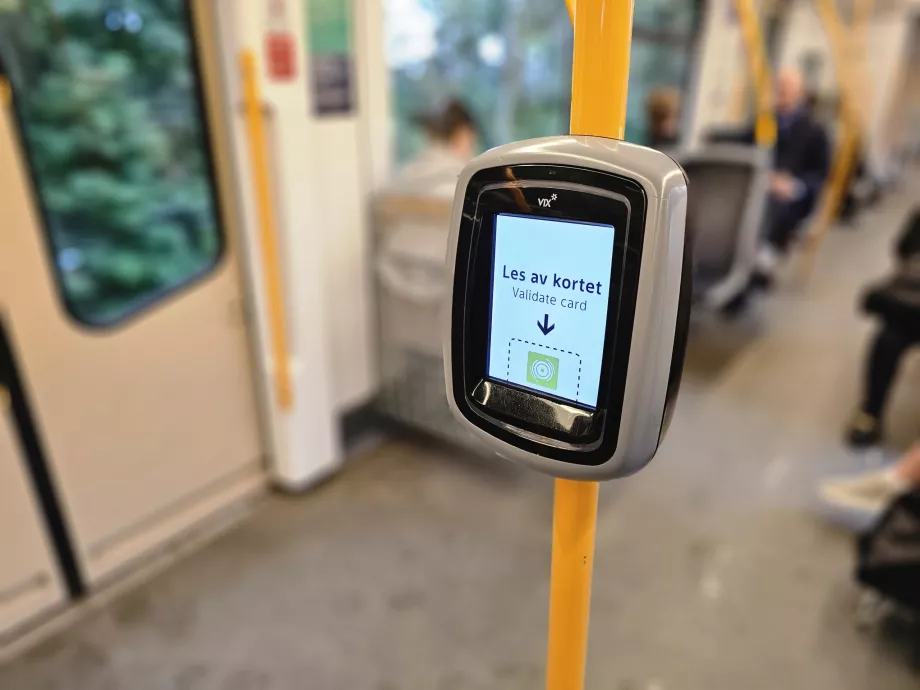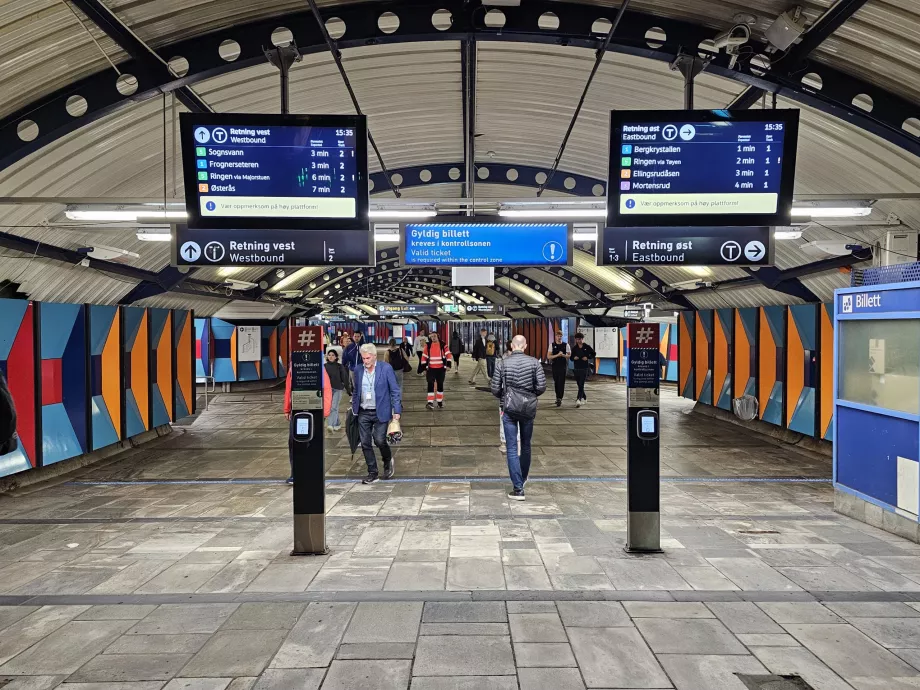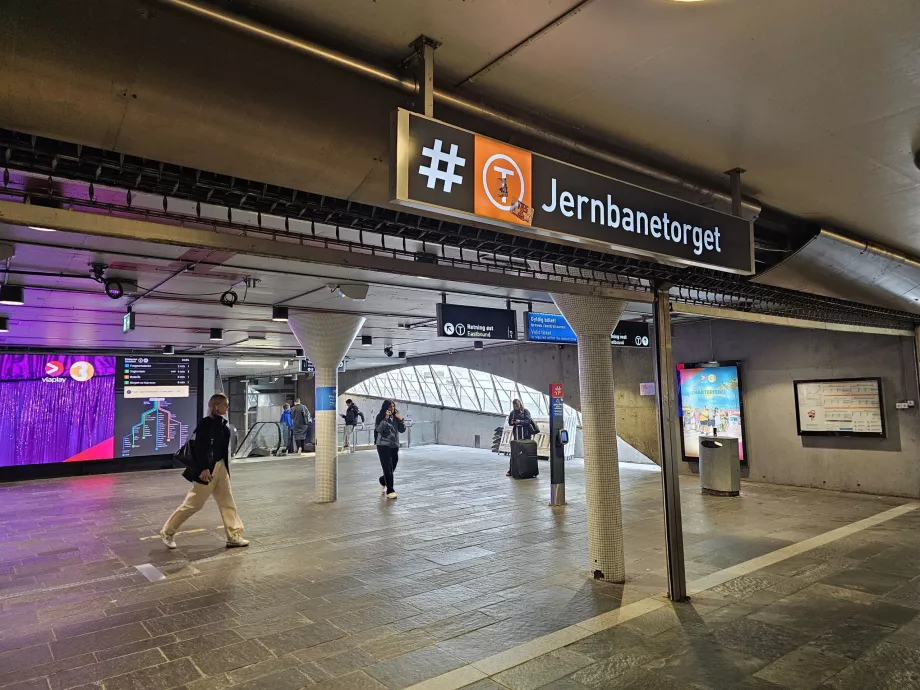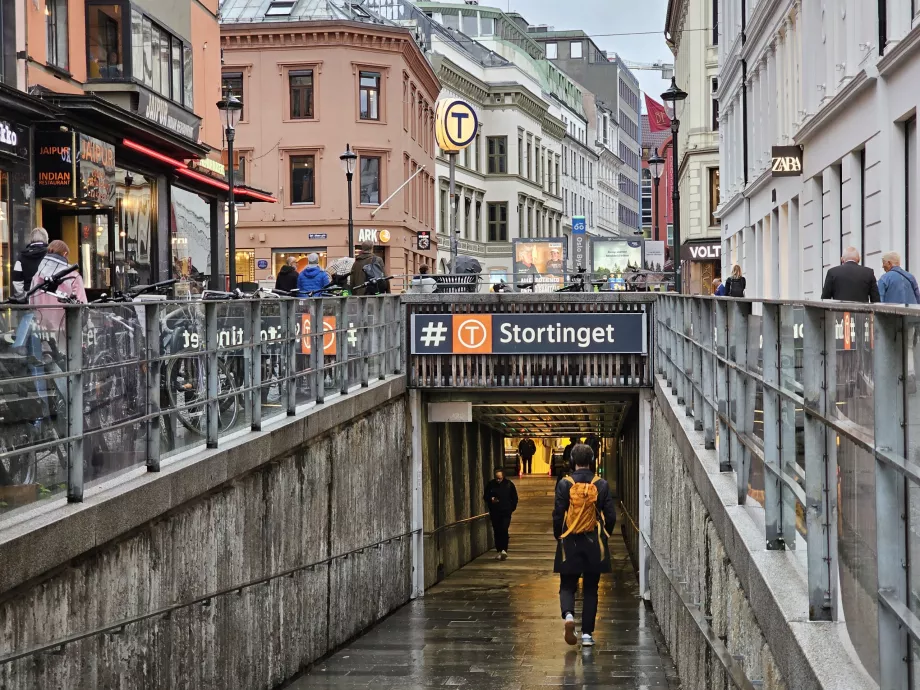Metro in Oslo

Oslo's metro is a clear system that quickly transports passengers from the city centre to residential areas on the outskirts of the city.
Tourists will especially use the metro to travel from the city centre to the ski areas and forests north of the city, which are served by two metro lines.
The metro trains run underground in the centre but mostly above ground on the outskirts.
Find a hotel near a metro station
Map and metro lines in Oslo
Oslo has 5 metro lines, all converging in the centre and all running together in the section Majorstuen - Nationaltheatret - Stortinget - Jernabanetorget (station) - Grønland - Tøyen.
This creates a very busy spine route in the centre, with the metro running roughly every 2-3 minutes.
The individual lines have a frequency of 8 to 15 minutes.
- Line 1, a popular tourist route marked in light blue, runs from the centre steeply uphill through picturesque neighbourhoods to the Holmenkollenski area
- There are short platforms between Steinerud and Frognerseteren stations, so the doors on the last carriage do not open
- Line 2 - the orange line runs east-west between Østerås and Ellingsrudåsen
- Line 3 - the purple line is the longest and connects the remote suburb of Kolsås in the west with the district of Mortensrud in the southeast
- Line 4 - the dark blue route serves the southern part of Bergkrystallen and runs through the centre past Ullevaal stadium to the north-east to Vestli
- Line 5 - the green line comes from Vestli to the centre, makes a wide circuit around Oslo (called "Ringen"), returns to the centre and continues on the western part of the circuit around Ullevaal Stadium to Lake Sognsvann
- Always pay attention to your destination. The train marked "Ringen" makes a circuit around the city, while the train marked "Sognsvann" breaks off from the circuit behind Ullevaal Stadium and heads north
Metro tickets
Oslo Metro is part of the Ruter system, which also includes the regional Vy trains, trams, buses and ferries.
Tickets are the same for all modes of transport and you can freely change from metro to trams, buses, trains and boats.
Children under 6 ride for free. Seniors over 67 only need to show ID and the discount applies to seniors regardless of nationality.
Single fare
Valid for 60 minutes with any number of transfers.
| Adults | Children 6-17 years | Seniors over 67 |
|---|---|---|
| 42 nok | 16,80 nok | 21 nok |
Day and multi-day fares
The validity of the ticket always starts with the marking or clicking of a button on the mobile app and is valid for the following 24 or 168 hours.
| Adults | Children 6-17 years | Seniors over 67 | |
|---|---|---|---|
| 24 hours | 127 nok | 64 nok | 64 nok |
| 7 days | 352 nok | 177 nok | 177 nok |
Zones
You don't have to worry about zones when travelling by metro.
The complete metro network in Oslo is in zone 1.
Where to buy tickets
You can buy tickets for public transport in two ways:
Mobile app Ruter
You can download the official app via Google Play / App Store.
You pay for the ticket, activate it through the app at the time you choose and then you don't have to deal with anything.
You do not need to attach the ticket to the validator. Just show it at the random transport check.
Chip ticket
You can still buy a classic paper ticket with a chip.
There are no longer any ticket machines in Oslo, but you can buy tickets at all 7-Eleven, Deli De Luca, Narvesen and Mix stores. The paper ticket must always be attached to the validator before entering a metro or train station or inside metro, tram, bus, boat cars.
In Oslo, you can't pay fares with your own contactless card.
Timetables and frequencies
Trains on all lines run approximately every 8 to 10 minutes during the day on weekdays from Monday to Friday.
On weekends the frequency is 10-20 minutes.
The metro runs from approximately 5:30 to 0:45 on weekdays. On Saturdays, Sundays and public holidays, metro service does not start until approximately 6:30 am.
Full timetables for all routes can be found on the ruter.no website.
Metro stations
Oslo's metro stations are not architecturally interesting (unlike, for example, the neighbouring capital Stockholm). On the contrary, they are built in a purely utilitarian style.
The signage is very clear and there are electronic boards on each platform with departure times.
From the outside, the metro stations are always marked with the letter T. In fact, the metro is referred to as "T-Bane" in Norwegian.
In sections where several lines run together, all lines in a given direction always run on the same track from the same platform. Therefore, always pay extra attention to your destination.
There are no ticket machines or toilets in the station lobbies.
Any questions left?
If you have any questions or comments about the article...


